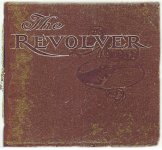Lee, I have a 1914 catalog identifying both models. Also, a 1906 price list shows Model 1902 for $15 and a Model 1905 w/square handle for $16.00 in both 32 WCF and 38 Special.
I don't get passionate about this debate, it just adds fun and thinking to collecting. There appears to be merit on both sides of the controversy.
If the 1914 catalog text in Smith advertising for the 1902 model can be believed that; "This model is identical with Model 1905, shown on the opposite page, except in the shape of the handle.", meaning it has the 5th screw and cyl stop changes of the M1905, this might make a case for a "Model of 1902 - 2nd Change" or no change from the "Model of 1902 – 1st Change", just a new grip shape option that began before the Model 1905.
Or is the quoted text above just marketing hype to sell off "Model of 1902 - 1st Change" inventory?
I know that Smith didn't like to be very transparent in their marketing, they preferred not to bring attention to the changes with different model names. We collectors have done that for our purposes until Smith changed and started using the engineering change dash #s following model #s post 1957.
Hence the debate ensues that if the 1902 - round butt or sq butt has "identical" lockwork to the 1905, it can be considered a round or sq butt 1905. But as Mikepriwer indicates, advertising continues to market the 38 M&P as two separate models, long after old inventory of the 1902 - 1st change was exhausted, and with 1905 changes (5th screw, et.al.), which they do have, there's the case that the round but is a M1902 - 2nd Change. At least until the 1919 catalog, when the 1902 and 1905 designations are dropped and replaced with 38 M&P for both models, therefore in my mind making them one and the same model with a grip shape option like many other post war models.
It's a conundrum.
But regarding the original part of the debate: IMHO, if a model 38 M&P SQUARE BUTT still only has 4 screws, single extractor star alignment pin, w/o the 1905 cyl stop/cut out changes, then I would consider it a Model 1902 - 1st Change because not having the 5th screw, et.al. changes, differentiates it from the Model 1905 introduced in May 2, 1905.
Last edited:



